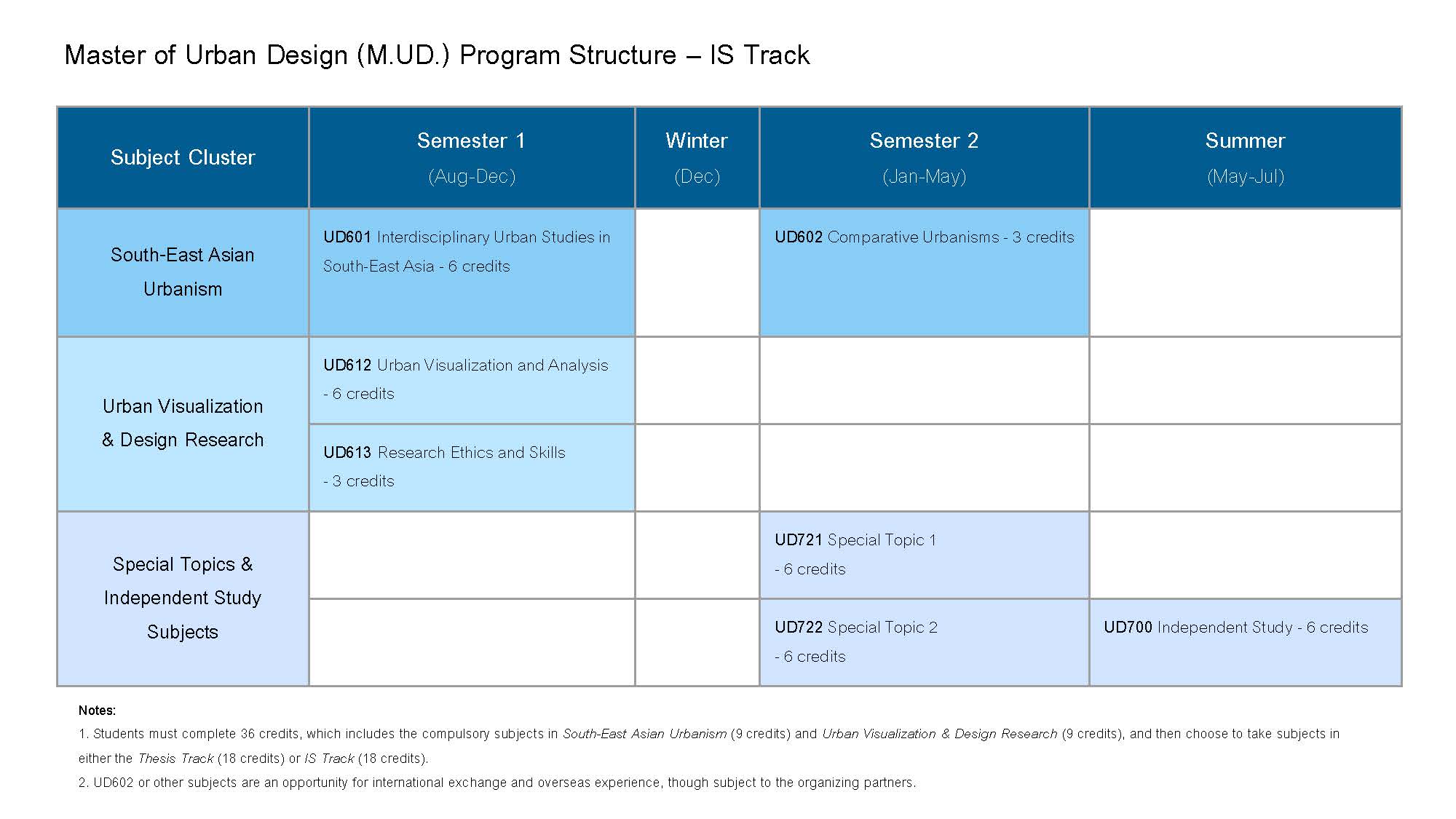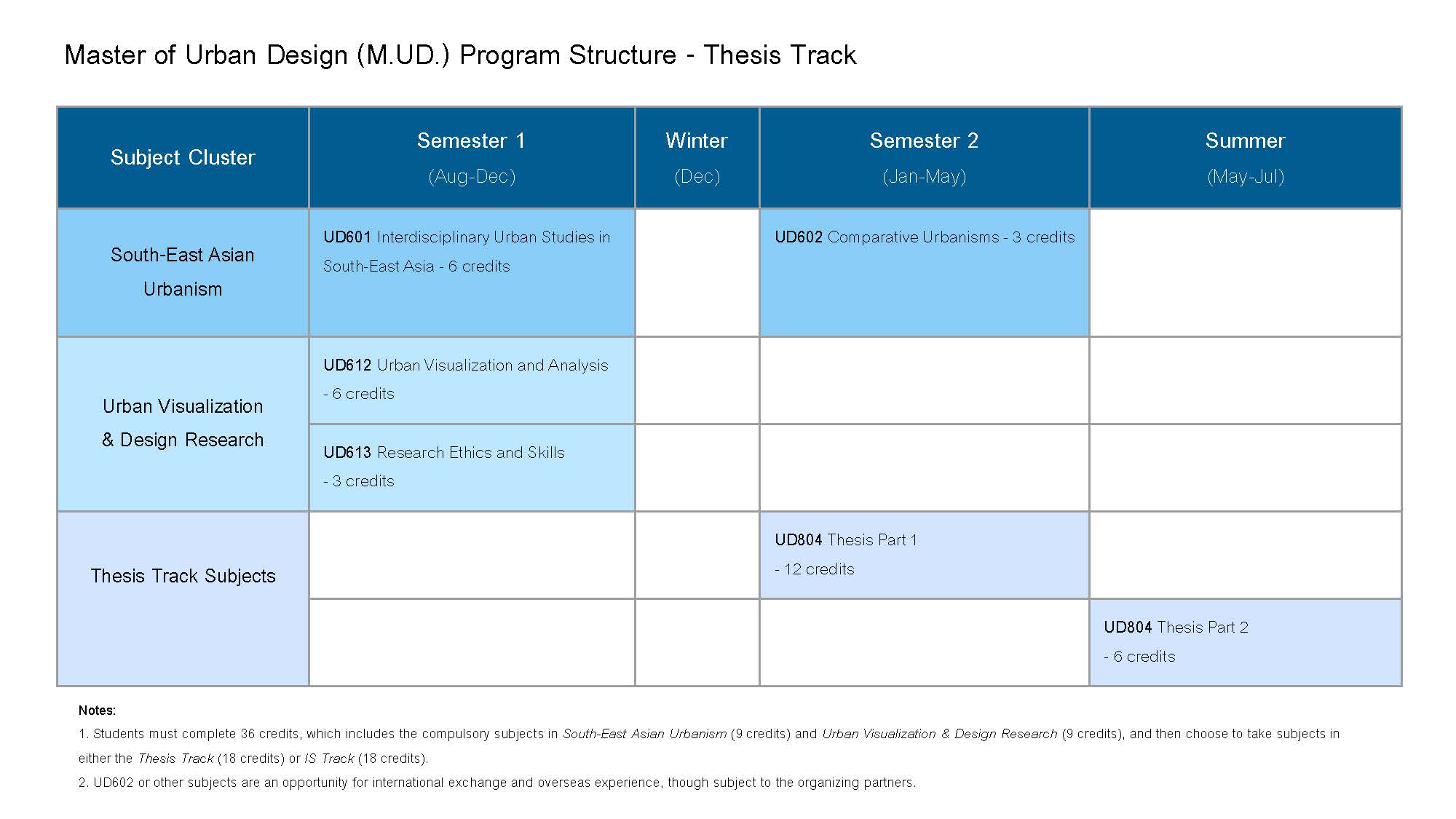Philosophy
The Master of Urban Design (M. UD.) international program is a one-year program with a unique focus on the issues of urbanization in South-East Asia. The program provides an interdisciplinary approach to urban design research towards new understandings and insights of issues in the region. This program aims to develop urban experts who are knowledgeable in sustainable urban design and development, and who are committed to creating inclusive, innovative, resilient, and livable cities for the well-being of urban communities, leaving no one and no place behind.
Importance
As the world continues to urbanize, with an expected increase to 68% global urban population by 2050, urbanization can be a positive force to address urgent challenges, aligned with UN SDG 11 of Sustainable Cities and Communities, as well as the urban dimensions of the other SDGs. Asia adds 48 million people per year to its urban population, which is more than the rest of the world combined, and as South-East Asia continues to urbanize, its cities will face ever increasing challenges, including socio-economic issues, environmental issues, and disaster vulnerability due to climate change. This graduate program aims to equip students within the region with the knowledge and expertise to analyze the various issues in order to address the most complex and urgent problems facing their cities.
Objective
This program is for those pursuing a graduate degree from Thailand as well as international students particularly from South-East Asia and beyond. The program is situated in Thammasat University Rangsit campus, looking from megacities to intermediary cities and peri-urbanization. Through a revised curriculum consisting of taught courses and independent research subjects, combined with international exchange activities with international partners, students will work towards a comprehensive, interdisciplinary, and integrated research project in an area of their own choosing.
This program welcomes students from architecture and design related built environment backgrounds, as well as those from non-architecture and design related backgrounds, including sociology and social sciences, geography, engineering, business and liberal arts, as well as global studies. Those coming from non-architecture and design related backgrounds should have as a minimum, one year work experience in their respective fields.
Program Structure
Students must complete 36 credits, which includes the compulsory subjects in South East Asian Urbanism (9 credits) and Urban Visualization & Design Research (9 credits), and then choose to take subjects in either the Thesis Track (18 credits) or IS Track (18 credits).



